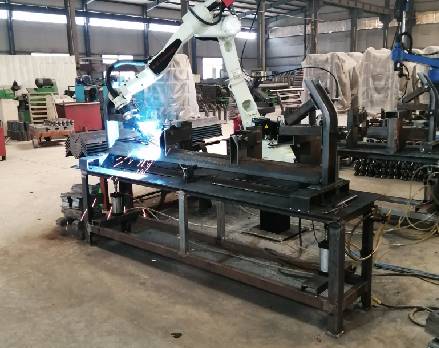 Afrikaans
Afrikaans  Albanian
Albanian  Amharic
Amharic  Arabic
Arabic  Armenian
Armenian  Azerbaijani
Azerbaijani  Basque
Basque  Belarusian
Belarusian  Bengali
Bengali  Bosnian
Bosnian  Bulgarian
Bulgarian  Catalan
Catalan  Cebuano
Cebuano  Corsican
Corsican  Croatian
Croatian  Czech
Czech  Danish
Danish  Dutch
Dutch  English
English  Esperanto
Esperanto  Estonian
Estonian  Finnish
Finnish  French
French  Frisian
Frisian  Galician
Galician  Georgian
Georgian  German
German  Greek
Greek  Gujarati
Gujarati  Haitian Creole
Haitian Creole  hausa
hausa  hawaiian
hawaiian  Hebrew
Hebrew  Hindi
Hindi  Miao
Miao  Hungarian
Hungarian  Icelandic
Icelandic  igbo
igbo  Indonesian
Indonesian  irish
irish  Italian
Italian  Japanese
Japanese  Javanese
Javanese  Kannada
Kannada  kazakh
kazakh  Khmer
Khmer  Rwandese
Rwandese  Korean
Korean  Kurdish
Kurdish  Kyrgyz
Kyrgyz  Lao
Lao  Latin
Latin  Latvian
Latvian  Lithuanian
Lithuanian  Luxembourgish
Luxembourgish  Macedonian
Macedonian  Malgashi
Malgashi  Malay
Malay  Malayalam
Malayalam  Maltese
Maltese  Maori
Maori  Marathi
Marathi  Mongolian
Mongolian  Myanmar
Myanmar  Nepali
Nepali  Norwegian
Norwegian  Norwegian
Norwegian  Occitan
Occitan  Pashto
Pashto  Persian
Persian  Polish
Polish  Portuguese
Portuguese  Punjabi
Punjabi  Romanian
Romanian  Russian
Russian  Samoan
Samoan  Scottish Gaelic
Scottish Gaelic  Serbian
Serbian  Sesotho
Sesotho  Shona
Shona  Sindhi
Sindhi  Sinhala
Sinhala  Slovak
Slovak  Slovenian
Slovenian  Somali
Somali  Spanish
Spanish  Sundanese
Sundanese  Swahili
Swahili  Swedish
Swedish  Tagalog
Tagalog  Tajik
Tajik  Tamil
Tamil  Tatar
Tatar  Telugu
Telugu  Thai
Thai  Turkish
Turkish  Turkmen
Turkmen  Ukrainian
Ukrainian  Urdu
Urdu  Uighur
Uighur  Uzbek
Uzbek  Vietnamese
Vietnamese  Welsh
Welsh  Bantu
Bantu  Yiddish
Yiddish  Yoruba
Yoruba  Zulu
Zulu Jan . 20, 2025 03:42
Back to list
Side Roller (Also Called Standing Roller or Wing Roller)
Return pulleys, essential components in conveyor and pulley systems, are often underestimated but pivotal in maintaining the efficiency and smooth operation of these industrial machines. They ensure that the conveyor belt or chain rotates smoothly by guiding and adjusting tension, ultimately supporting the load it carries. In this comprehensive analysis, drawn from years of field experience, expert advice, and authoritative resources, we delve into the myriad aspects that make return pulleys indispensable and illustrate why selecting the right one is crucial for enhancing productivity and reliability.
Further trust in product efficacy is garnered through rigorous testing and continuous innovation. Industry pioneers consistently invest in research and development to refine pulley designs and introduce cutting-edge improvements. These enhancements range from friction-reducing surface treatments to the integration of smart technologies for real-time monitoring and diagnostics, aligning with modern trends in predictive maintenance. In practical settings, the importance of return pulleys resonates through case studies and user testimonials. Consider the instance of a large-scale mining operation that faced frequent disruptions due to belt misalignments. The strategic installation of precision-engineered return pulleys resulted not only in enhanced alignment but also in a 30% improvement in system uptime, a testament to the transformative impact of a well-chosen component. Finally, the longevity of return pulleys underscores their economic value. While initial investment considerations are tangible, it is the extended service life and reduced need for maintenance interventions that cement their role as cost-effective solutions. This economic proposition is validated by procurement specialists who recognize return pulleys as vital assets in reducing the total cost of ownership of conveyor systems. In conclusion, the pivotal role of return pulleys in conveyor systems cannot be overstated. Combining robust material construction, precise engineering, and compliance with industry standards, they ensure that industrial operations are not only efficient but also reliable. By opting for high-quality, well-suited return pulleys, industries can safeguard their operations against costly downtimes and prolong the life of their conveyor systems. With innovation and expertise driving continuous improvements, return pulleys remain foundational to industrial success.


Further trust in product efficacy is garnered through rigorous testing and continuous innovation. Industry pioneers consistently invest in research and development to refine pulley designs and introduce cutting-edge improvements. These enhancements range from friction-reducing surface treatments to the integration of smart technologies for real-time monitoring and diagnostics, aligning with modern trends in predictive maintenance. In practical settings, the importance of return pulleys resonates through case studies and user testimonials. Consider the instance of a large-scale mining operation that faced frequent disruptions due to belt misalignments. The strategic installation of precision-engineered return pulleys resulted not only in enhanced alignment but also in a 30% improvement in system uptime, a testament to the transformative impact of a well-chosen component. Finally, the longevity of return pulleys underscores their economic value. While initial investment considerations are tangible, it is the extended service life and reduced need for maintenance interventions that cement their role as cost-effective solutions. This economic proposition is validated by procurement specialists who recognize return pulleys as vital assets in reducing the total cost of ownership of conveyor systems. In conclusion, the pivotal role of return pulleys in conveyor systems cannot be overstated. Combining robust material construction, precise engineering, and compliance with industry standards, they ensure that industrial operations are not only efficient but also reliable. By opting for high-quality, well-suited return pulleys, industries can safeguard their operations against costly downtimes and prolong the life of their conveyor systems. With innovation and expertise driving continuous improvements, return pulleys remain foundational to industrial success.
Next:
OUR PRODUCTS





























